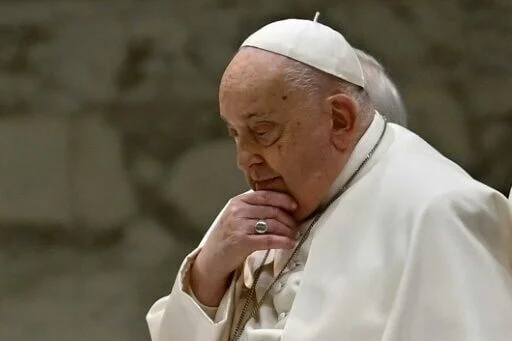
Doctors express optimism but stress continued monitoring
Rome, Italy – Pope Francis has reached the two-week mark in his hospitalization for pneumonia, with doctors indicating that he has passed the most critical stage of his illness. However, they caution that further stability is needed before declaring him out of danger.
Signs of improvement amid cautious optimism
The Vatican provided an update early Friday, suggesting a return to normalcy in the 88-year-old pontiff’s routine at Rome’s Gemelli Hospital. “As in past days, the night was tranquil, and the pope now is resting,” the statement read.
Doctors noted that Francis’ condition continued to improve, as he was alternating between high-flow supplemental oxygen via a nasal tube and a mask, indicating better respiratory function. In another positive development, he left his hospital room to pray in his private chapel while continuing respiratory physiotherapy and administrative work.
For the second consecutive day, medical professionals refrained from describing his condition as critical, suggesting that he had overcome the most acute phase of the infection. Nevertheless, they emphasized that “further days of clinical stability are needed” before they officially revise their prognosis.
Francis’ health struggles and the global response
Pope Francis was admitted to Gemelli Hospital on February 14 after his bronchitis worsened. His condition raised global concern, particularly over the weekend when respiratory distress and kidney issues led to fears for his life.
His gradual recovery has quelled speculation about an imminent death, resignation, or conclave, reinforcing that he remains in charge of his papal duties. Prayers for his recovery continue to pour in from around the world.
In Mexico City, dozens gathered at the cathedral on Thursday night to pray for his health.
“He is like part of the family,” said Araceli Gutiérrez, recalling the moment she saw the pope during his 2016 visit to Mexico. “That’s why we feel so concerned for him.”
María Teresa Sánchez, a visitor from Colombia, expressed a similar sentiment. “That’s like having a relative within the higher-ups, with God,” she said. “He has done so much for religion; he’s such a humble person.”
Uncertainty over upcoming papal events
Despite his improvements, changes are being made to Pope Francis’ upcoming schedule. The Vatican canceled a Holy Year audience originally set for Saturday, and it remains uncertain whether he will deliver his traditional Sunday noon blessing for the third consecutive week.
Next Wednesday marks the beginning of Lent with Ash Wednesday, a period leading up to Holy Week and Easter, which falls on April 20 this year. In past years, Francis has scaled back participation in these events when battling winter illnesses.
Looking further ahead, several key engagements remain on the calendar. On April 27, the pope is scheduled to canonize Carlo Acutis, the first millennial and digital-era saint. Acutis, an Italian teenager who died of leukemia in 2006 at age 15, is considered an inspiration for young Catholics.
Another major event is the May 24 commemoration of the 1,700th anniversary of the Council of Nicaea, Christianity’s first ecumenical council. Patriarch Bartholomew I, the spiritual leader of the world’s Orthodox Christians, has invited Pope Francis to join him in Iznik, Turkey, for the occasion, signaling a significant step in Catholic-Orthodox reconciliation.
Before his illness, Francis had expressed his intention to attend, though the Vatican has yet to confirm whether the trip will proceed as planned.
With the pope’s condition steadily improving but still requiring careful monitoring, the world watches closely as he navigates his recovery while continuing to fulfill his spiritual leadership.






